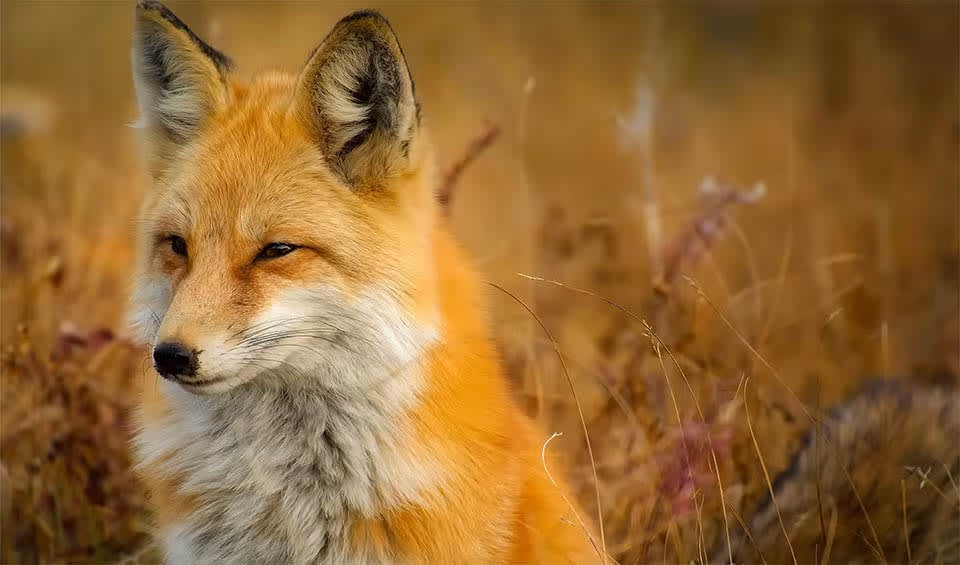Stands as the largest fox species globally, it is renowned for its adaptability and dynamic range of fur colors, which can vary from brown to black to the iconic amber-red hue from which it derives its name. This remarkable species boasts a combination of physical prowess and cunning intelligence, making it a formidable predator and survivor in diverse habitats.
Despite its name, the red fox’s coat coloration is not always red but can display a spectrum of hues depending on environmental factors and genetic variations. This variability allows red fox populations to blend seamlessly into a range of landscapes, from dense forests to open grasslands, enhancing their ability to conceal themselves from predators and prey alike.
Known for their stealthy and resourceful nature, red foxes exhibit a preference for habitats bordering forests, towns, and countryside, where they can exploit a diverse range of food sources and shelter options. While they are primarily nocturnal hunters, venturing out under the cover of darkness to forage for food, red foxes are also active during the day, particularly in areas with abundant prey populations.
Despite their impressive adaptability and resilience, red foxes face significant threats to their survival, primarily stemming from human activities. In many regions, red foxes are considered pests due to their predation on poultry and small mammals, as well as game birds targeted by hunters. As a result, humans often hunt red foxes, either for pest control purposes or for sport, leading to population declines in some areas.
Distribution
 Afghanistan
Afghanistan Albania
Albania Algeria
Algeria Andorra
Andorra Armenia
Armenia Australia
Australia Austria
Austria Azerbaijan
Azerbaijan Bangladesh
Bangladesh Belgium
Belgium Bhutan
Bhutan Bosnia And Herz.
Bosnia And Herz. Bulgaria
Bulgaria Canada
Canada Croatia
Croatia Cyprus
Cyprus Czechia
Czechia Denmark
Denmark Egypt
Egypt Estonia
Estonia Faroe Islands
Faroe Islands Finland
Finland France
France Georgia
Georgia Germany
Germany Gibraltar
Gibraltar Greece
Greece Greenland
Greenland Holy See
Holy See Hungary
Hungary Iceland
Iceland India
India Iran
Iran Iraq
Iraq Ireland
Ireland Israel
Israel Italy
Italy Japan
Japan Jordan
Jordan Kazakhstan
Kazakhstan Korea
Korea Official estimate
Official estimate
 Kuwait
Kuwait Kyrgyzstan
Kyrgyzstan Latvia
Latvia Lebanon
Lebanon Libya
Libya Liechtenstein
Liechtenstein Lithuania
Lithuania Luxembourg
Luxembourg Malta
Malta Monaco
Monaco Mongolia
Mongolia Montenegro
Montenegro Morocco
Morocco Myanmar
Myanmar Nepal
Nepal Netherlands
Netherlands New Zealand
New Zealand North Korea
North Korea North Macedonia
North Macedonia Norway
Norway Oman
Oman Pakistan
Pakistan Poland
Poland Portugal
Portugal Qatar
Qatar Romania
Romania Russia
Russia San Marino
San Marino Saudi Arabia
Saudi Arabia Serbia
Serbia Slovakia
Slovakia Slovenia
Slovenia Spain
Spain Sudan
Sudan Svalbard
Svalbard Sweden
Sweden Switzerland
Switzerland Syria
Syria Tajikistan
Tajikistan Tunisia
Tunisia Turkey
Turkey Turkmenistan
Turkmenistan UAE
UAE United Kingdom
United Kingdom United States
United States Uzbekistan
Uzbekistan Yemen
YemenRecent Updates
- The Korea National Park Service announced that it released 30 red foxes into Mount Sobaek to help restore the endangered species, whose numbers plummeted in the 1970s due to a nationwide rodent poisoning campaign.
Anything we've missed?
Help us improve this page by suggesting edits. Glory never dies!
Suggest an editGet to know me
Terrestrial / Aquatic
Altricial / Precocial
Polygamous / Monogamous
Dimorphic (size) / Monomorphic
Active: Diurnal / Nocturnal
Social behavior: Solitary / Pack / Herd
Diet: Carnivore / Herbivore / Omnivore / Piscivorous / Insectivore
Migratory: Yes / No
Domesticated: Yes / No
Dangerous: Yes / No






